Most of us have heard of chakras, whether in yoga class or someone talking about energy medicine. But you may have wondered, what the heck is a chakra?
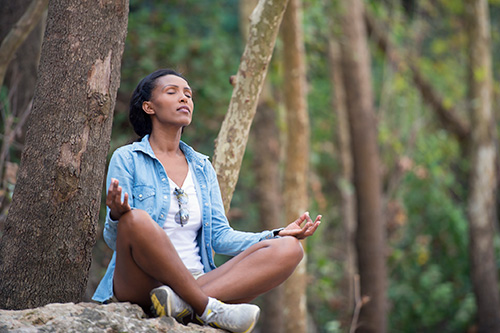
Simply put, a chakra is a virtual spinning disk, wheel or vortex. In ancient Eastern medicine, there are 7 of these spinning energy centers in and around your body. The locations of the chakras begin at the very base of the spine and run up the center of the body. And it’s important to understand their physical, emotional and energetic qualities.
Knowing more about the chakras will help you become happier and healthier. So let’s explore their physical and subtle dimensions, and how you can benefit from their powers.
What are the 7 chakras?
Each chakra is physically associated with the region where it is located in the body. Each represents the state of health or disease of nearby organs, and can influence them.
Chakras also have a big effect on the spiritual or developmental sides of beings.Each chakra houses specific meaning regarding your inner development, emotional health and even deeply-rooted memories. Certain yoga poses give you the chance to access the chakras.
1st Chakra: Root Chakra or Muladhara, meaning root or foundation
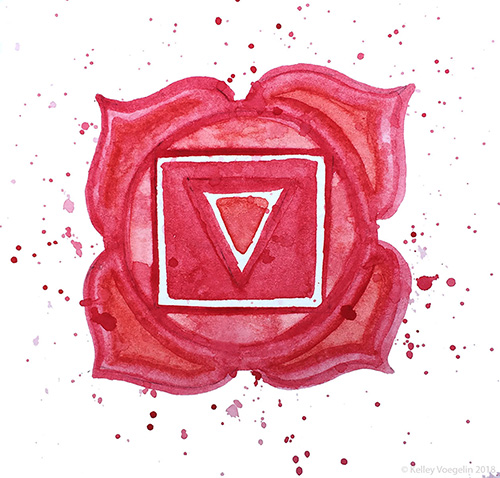
Basics: Located at the base of the spine, the Muladhara is associated with the earth element, the seed (Bija) sound “Lam,”and the color red.
Physical association: The perineum, the genitals, the base of the pelvis, with connections to the legs and feet.
Psychological and spiritual influence: Survival,stability, grounding and trust. The wisdom from past lives, ancestors, our earliest childhood memories and our connection to family reside here. The Kundalini (uplifting spiritual and physical yoga practices with movement, dynamic-breathing techniques,meditation and mantras) serpent energy lies coiled in the root chakra.
Best yoga poses: Standing Warrior poses that stabilize the feet and legs help strengthen and clear this chakra. Seated postures invite security. Connect your lower half to the Earth — stand firm, sit well, lie down and breathe into that intention.
2nd Chakra: Sacral Chakra or Swadhisthana, meaning self’s dwelling place
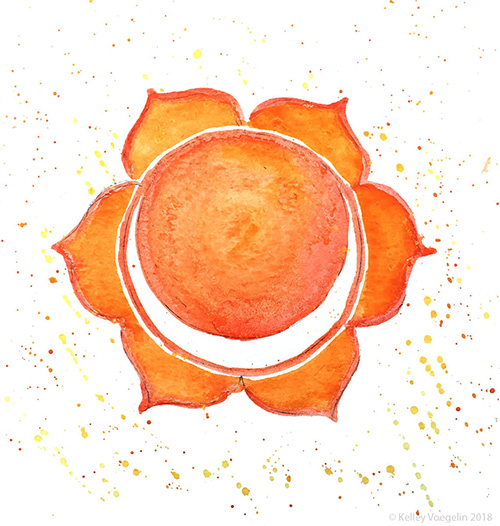
Basics: Located from pubic bone and sacrum to just below the navel, the Swadhisthana is associated with the water element, the seed sound “Vam,” and the color orange.
Physical association: The small and large intestines, womb, reproductive system, urinary bladder.
Psychological and spiritual influence: Creativity,sensuality and sexuality. Like a womb, the qualities of a strong second chakra offer comfort, care, sweetness, a feeling of hominess. Guided by faith, trust and healing,your health and well being are here. This chakra rules the waters of the body and embodies flow, movement, your ability to let go, adapt and move forward. It also allows you to love physically, and create.
Best yoga poses: Postures that target opening in the pelvis and hips stimulate an open flow of energy in this region. Practice asanas such as lunges, squats, hip openers like Pigeon Pose, and seated shapes like Bound Angle.
3rd Chakra: Solar Plexus or Manipura, meaning lustrous gems
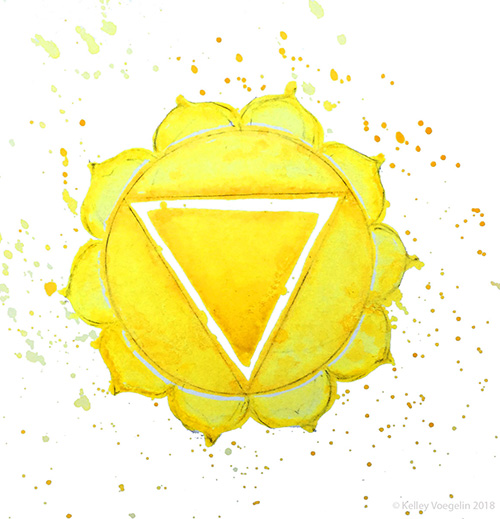
Basics: Located between navel and lower rib cage, the Manipura is associated with the fire element, the seed sound “Ram,” and the color yellow.
Physical association: Governs many vital organs, including the liver, gallbladder, stomach, pancreas, spleen, kidneys and adrenals.
Psychological and spiritual influence: Identity and individuality, willpower and ambition, strength and courage live here. The 3rd chakra supports the ability to move forward on life’s path using logic, cunning and confidence. Your inner self, which manifested in the first two chakras, now has an identity, purpose and power.
When this chakra is balanced, you live authentically, with something to offer the external world. But when it’s out of balance, you either feel you have no purpose or direction, or the total opposite comes forward: heightened ego, aggression, and hunger for power.
Best yoga poses: Twists and belly-down back bends (Sphinx, Locust, Cobra) release blockages and stimulate flow in this energy center.
4th Chakra: Heart Chakra or Anahata, meaning unstuck sound
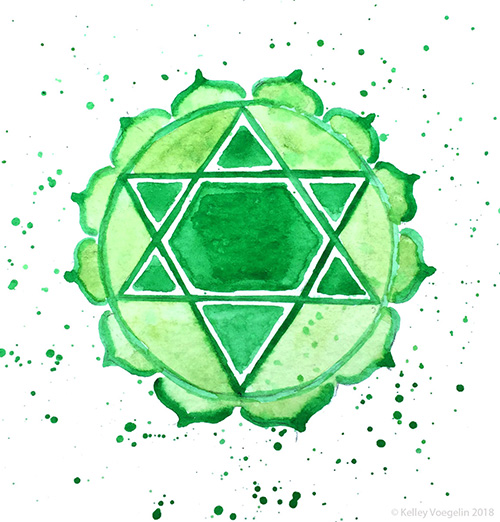
Basics: Located in the heart space at the center of the chest, the Anahata is associated with the air element, the seed sound “Yam,” and the color green.
Physical association: Rules the heart, pericardium,thymus and lungs, with an extension of the chakra moving through the arms and hands.
Psychological and spiritual influence: Love,compassion, joy. Your ability to love and nourish others, as well as your own self,is cultivated through a clear Heart chakra. When the Anahata is strong, you are guided by love, feeling and heart rather than logic, thought and head.Your capacity for forgiveness, acceptance and gratitude dwells here. When this area is blocked, you can’t open up into all kinds of love, and can experience loneliness and hold grudges.
Best yoga poses: Back bends of all kinds (active or restorative) open up this energy center. Pranayama (breathing exercises)expands the lung and heart region for more clarity and light. Meditations on love,compassion, gratitude and forgiveness strengthen this chakra.
5th Chakra: Throat Chakra or Vishuddha, meaning pure
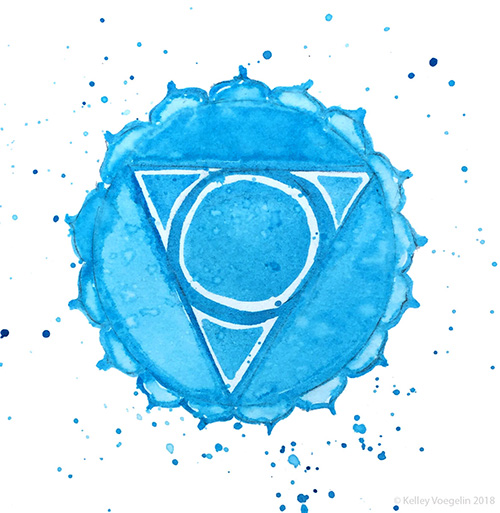
Basics: Located at the throat, the Vishuddhais associated with the ether element, the seed sound “Ham,” and the color blue.
Physical association: Throat region and its glands, the thyroid and parathyroid, metabolism, the voice.
Psychological and spiritual influence: Expression and communication (speaking and listening). This is the passageway where the other chakras converge and metabolize (break down and rebuild) so that you can express your true and unique self to the world. When in harmony, it is the site of clear speech, truth and purity.
A balanced 5th chakra allows you the capacity to know when and how to speak, and conversely, when to be quiet. When blocked or over stimulated, issues arise such as the inability to speak your thoughts and needs clearly, or the inability to recognize when to be silent and listen.
Best yoga poses: Postures that stimulate the throat through compression (Bridge Pose, Shoulder Stand, Plow) and expansion (Fish Pose, Camel.) Chanting the bija sounds for all the chakras brings awareness and clarity to each respectively. Nourish and purify this energy center through the subtle vibration made when you chant the sacred sound, “Ham.”
6th Chakra: Third Eye or Ajna, meaning command
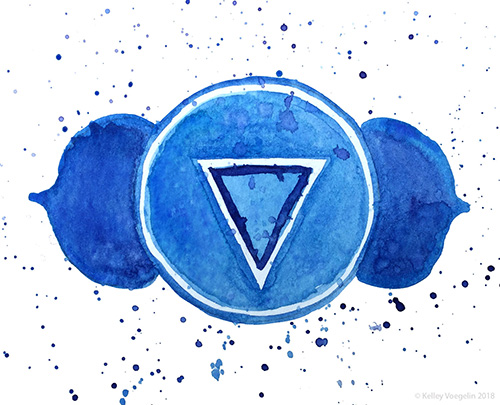
Basics: Located at the center of the forehead between the eyebrows, the Ajna is beyond the elements. The seed sound is“Om,” and the color is indigo.
Physical association: Pituitary gland, hypothalamus,brain, eyes, ears, nose.
Psychological and spiritual influence: This is the seat of the mind — knowledge, intellect, memory, intuition, vision and clarity.Deep perception, concentration and understanding reside here.
Best yoga poses: Two major energetic pathways of the subtle body, the Ida and Pingala Nadis, merge in this region and exit through the nose. The Pranayama technique of alternate nostril breathing purifies this area, while meditations on the “third eye” deliver conscious awareness and strength.
7th Chakra: Crown Chakra or Sahasrara, meaning thousand petals
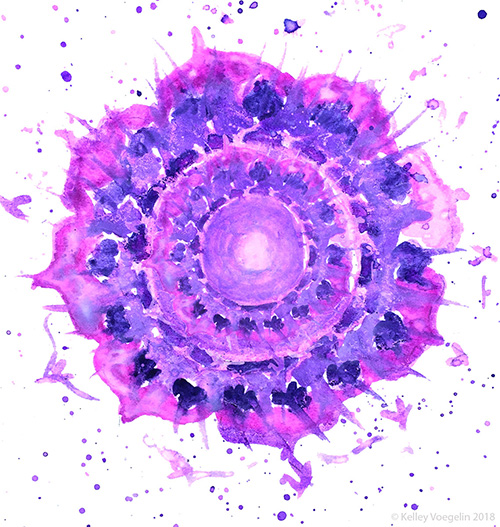
Basics: Located above the crown of the head,the Sahasrara is beyond time, space and elements. The seed sound is “Om”followed by silence, and the colors are purple and white.
Physical association: Pineal gland.
Psychological and spiritual influence: This is the site of infinite consciousness and highest knowledge. Bliss and transcendence of the self happens here — you are stripped of divisiveness, time, space, and the material plane, and connect as one with everyone else — all of nature, spirit, the cosmos, the divine.
Best yoga poses: Headstands bring direct balance to the crown chakra. Visualizations and meditations that focus on opening the area above the head also attract clarity toward this gateway to enlightenment and bliss.
The beautiful design of the chakra structure
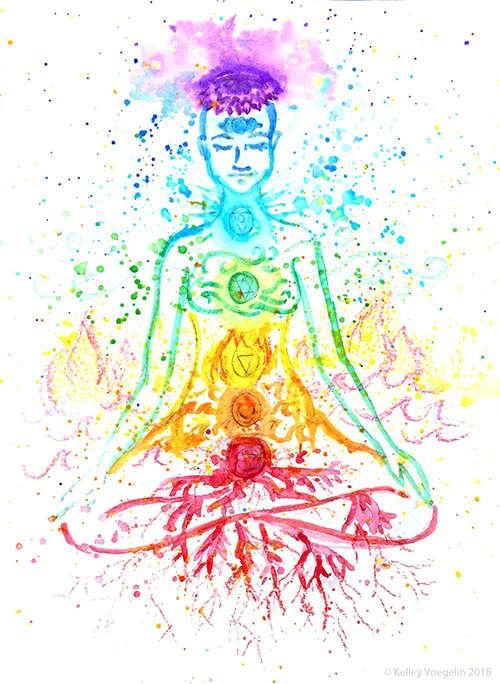
The stages of life are mapped out within the chakras, from root to crown. Like a seed longing for life, there is a beginning, a need for survival (root), and so life unfurls (sacral). The seed fills with empowerment (navel) and discovers a capacity for love (heart), expression (throat) and deep understanding (third eye). Eventually,the contents of the seed rise out of its small singular self, and upward toward a union with the universe (crown).
Like with all things in life, the chakras can spin out of balance and be either too wide open or overly blocked. Becoming aware of your own chakras, where they are, along with their physical and emotional patterns, can help you maintain balance.They also allow you to practice yoga with more intention.
May this offering inspire such awareness that the chakras of your subtle body reside in peace, harmony and balance.
 |
Find more calm with Kelley’s expert recommendations for yoga poses for stress relief. |










